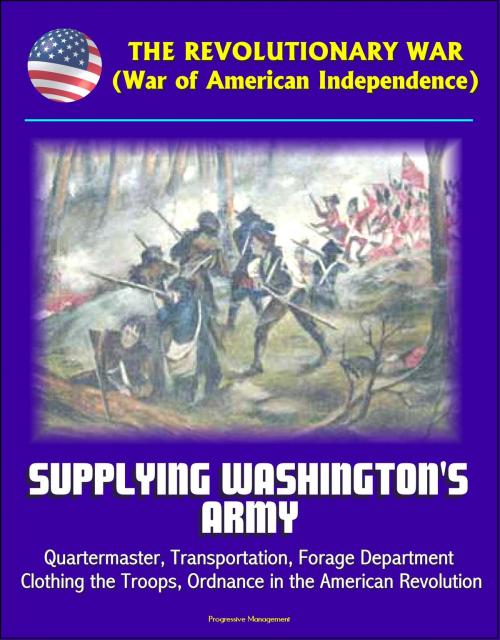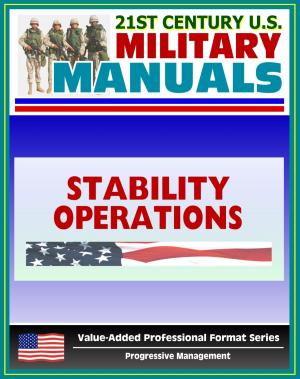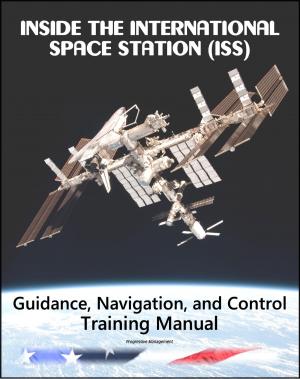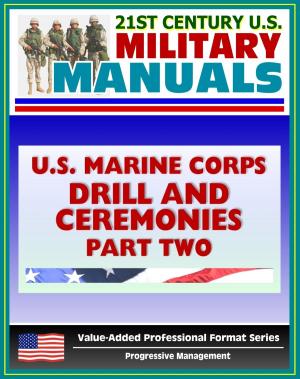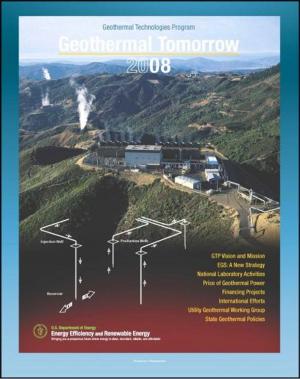The Revolutionary War (War of American Independence): Supplying Washington's Army - Quartermaster, Transportation, Forage Department, Clothing the Troops, Ordnance in the American Revolution
Nonfiction, History, Americas, United States, Revolutionary Period (1775-1800), Military| Author: | Progressive Management | ISBN: | 9781301970865 |
| Publisher: | Progressive Management | Publication: | October 18, 2012 |
| Imprint: | Smashwords Edition | Language: | English |
| Author: | Progressive Management |
| ISBN: | 9781301970865 |
| Publisher: | Progressive Management |
| Publication: | October 18, 2012 |
| Imprint: | Smashwords Edition |
| Language: | English |
This significant historical book on a previously unexplored aspect of the Revolutionary War was produced by the Center of Military History, providing an important basic reference on the military history of the Revolution. This book brings together for the first time a mass of data on the various institutions involved in keeping Washington's troops in the field. It should have a large impact on future accounts of the problems and operations of the Continental Army and serve as a standard reference on its supply system for decades to come.
Military operations of the American Revolution have been fully covered in numerous volumes, but these works have included relatively little analysis of how the Continental Army was kept in the field. Accounts have described how Revolutionary soldiers left bloody tracks in the winter snow as they marched without shoes to defeat the British at Trenton. Their stamina and fortitude have been extolled in descriptions of the distress they suffered at Valley Forge. The curious reader, however, is left to wonder how the soldier was clothed and armed and why there was such a shortage of provisions. This study seeks to provide answers as to how the main Continental army, the army directly under General George Washington's control, was maintained in the field for eight years.
Partial Contents: PREFACE * 1. THE CONTINENTAL ARMY * Appointment of Supply Chiefs * Gradual Evolution of a War Department * Mercantile Capitalism * Common Features of Supply Organization * Lack of a Stable Currency * Supply by Expropriation * Phases of Logistical Support * Preparations and Sources of Supply * Size of Continental Forces * 2. ORGANIZATION OF THE QUARTERMASTER'S DEPARTMENT * Appointment of Officers * Organization Under Mifflin * First Regulatory Measure * Mifflin's Services and Resignation * Appointment of Greene * Criticism of the Department * Reform of the Department * Appointment of Pickering * 3. LAND TRANSPORTATION * Need for Organic Transportation * Manufacture of Wagons * Establishment of the Wagon Department * Procedures and Abuses * Appointment of James Thompson * Proposals for an Enlisted Wagon Corps * Wagons on the Supply Lines * Congressional Action * Changes in the Wagon Department * Distress on the Supply Lines * Preparations for the 1781 Campaign * 4. FORAGE DEPARTMENT * Supply and Cavalry * Increased Demands in New York * First Regulatory Measure * Reasons for Forage Deficiency * Biddle's Reform Proposals * Problems Confronting Biddle * Biddle's Resignation and Recall * Forage Supply Under Pickering * 5. OTHER QUARTERMASTER SUPPORT * Water Transportation * The Boat Department * Sheltering the Troops * Quartermaster Artificers * 6. ORGANIZATION OF THE COMMISSARIAT * Appointment of Trumbull * Criticism of the Department * Regulation of 1777 * Appointment of William Buchanan * Continuation of the Issuing Department * Regulation of 1778 * Regulation of 1780 * 7. SUBSISTING THE ARMY UNDER THE COMMISSARIAT * Adoption of a Uniform Ration * The Ration and Health * Preparation of Food * Flour Supply Under Trumbull * Importance of Salt Meat Supply Under Trumbull Magazines * Supply During the Winter of 1776-1777 * Background for Valley Forge * Suspension of Meat Procurement * Competitive Measures for Flour Supply * Factors Hampering Meat Supply * Preparations Under Wadsworth * Flour for a Joint Venture Interference in Commissariat Matters * Transfer of Convention Troops * Depreciation and Supply * Distress at Morristown * 8. FROM COMMISSARIES TO CONTRACTORS * Criticism of the System * Possible Allied Cooperation * Breakdown of the Specific Supplies System * Limited Application of the Contract System * Contractual Authority * The Yorktown Campaign * Contractual Arrangements * Contract for a Moving Army * 9. ORGANIZATION OF THE CLOTHING DEPARTMENT * more
This significant historical book on a previously unexplored aspect of the Revolutionary War was produced by the Center of Military History, providing an important basic reference on the military history of the Revolution. This book brings together for the first time a mass of data on the various institutions involved in keeping Washington's troops in the field. It should have a large impact on future accounts of the problems and operations of the Continental Army and serve as a standard reference on its supply system for decades to come.
Military operations of the American Revolution have been fully covered in numerous volumes, but these works have included relatively little analysis of how the Continental Army was kept in the field. Accounts have described how Revolutionary soldiers left bloody tracks in the winter snow as they marched without shoes to defeat the British at Trenton. Their stamina and fortitude have been extolled in descriptions of the distress they suffered at Valley Forge. The curious reader, however, is left to wonder how the soldier was clothed and armed and why there was such a shortage of provisions. This study seeks to provide answers as to how the main Continental army, the army directly under General George Washington's control, was maintained in the field for eight years.
Partial Contents: PREFACE * 1. THE CONTINENTAL ARMY * Appointment of Supply Chiefs * Gradual Evolution of a War Department * Mercantile Capitalism * Common Features of Supply Organization * Lack of a Stable Currency * Supply by Expropriation * Phases of Logistical Support * Preparations and Sources of Supply * Size of Continental Forces * 2. ORGANIZATION OF THE QUARTERMASTER'S DEPARTMENT * Appointment of Officers * Organization Under Mifflin * First Regulatory Measure * Mifflin's Services and Resignation * Appointment of Greene * Criticism of the Department * Reform of the Department * Appointment of Pickering * 3. LAND TRANSPORTATION * Need for Organic Transportation * Manufacture of Wagons * Establishment of the Wagon Department * Procedures and Abuses * Appointment of James Thompson * Proposals for an Enlisted Wagon Corps * Wagons on the Supply Lines * Congressional Action * Changes in the Wagon Department * Distress on the Supply Lines * Preparations for the 1781 Campaign * 4. FORAGE DEPARTMENT * Supply and Cavalry * Increased Demands in New York * First Regulatory Measure * Reasons for Forage Deficiency * Biddle's Reform Proposals * Problems Confronting Biddle * Biddle's Resignation and Recall * Forage Supply Under Pickering * 5. OTHER QUARTERMASTER SUPPORT * Water Transportation * The Boat Department * Sheltering the Troops * Quartermaster Artificers * 6. ORGANIZATION OF THE COMMISSARIAT * Appointment of Trumbull * Criticism of the Department * Regulation of 1777 * Appointment of William Buchanan * Continuation of the Issuing Department * Regulation of 1778 * Regulation of 1780 * 7. SUBSISTING THE ARMY UNDER THE COMMISSARIAT * Adoption of a Uniform Ration * The Ration and Health * Preparation of Food * Flour Supply Under Trumbull * Importance of Salt Meat Supply Under Trumbull Magazines * Supply During the Winter of 1776-1777 * Background for Valley Forge * Suspension of Meat Procurement * Competitive Measures for Flour Supply * Factors Hampering Meat Supply * Preparations Under Wadsworth * Flour for a Joint Venture Interference in Commissariat Matters * Transfer of Convention Troops * Depreciation and Supply * Distress at Morristown * 8. FROM COMMISSARIES TO CONTRACTORS * Criticism of the System * Possible Allied Cooperation * Breakdown of the Specific Supplies System * Limited Application of the Contract System * Contractual Authority * The Yorktown Campaign * Contractual Arrangements * Contract for a Moving Army * 9. ORGANIZATION OF THE CLOTHING DEPARTMENT * more
